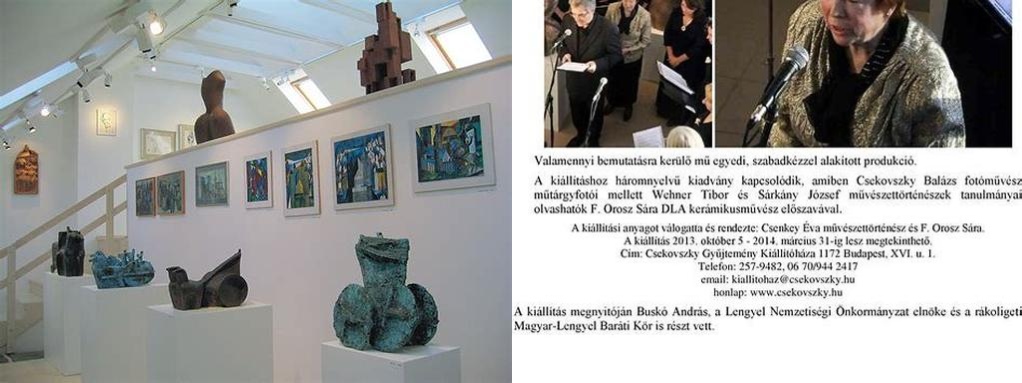
Csekovszky-gyűjtemény Kiállítóháza is one of those rare treasures in Budapest that you overhear locals mentioning with a knowing smile. Nestled away from the city’s mainstream bustle, this remarkable exhibition house celebrates both the creative spirit of Árpád Csekovszky and the story of ceramic art in Hungary. It’s located in the garden district of Mátyásföld, part of Budapest’s 16th district, and even the stroll out here feels like a quiet escape from the world of tourist-packed boulevards. There’s something wonderfully personal about entering a space so clearly infused with the vision and hands-on legacy of one artist and his family—this isn’t just a collection, it’s a living testimony to decades of devotion to the arts.
Árpád Csekovszky (1931-1997) loved the tactile magic of ceramics and found a thousand ways to stretch the medium’s possibilities. Walking through the exhibition house, you see firsthand his evolution across five decades: the early stoneware reliefs of the late 1950s, bold and abstract by turn, and the later poetic forms finished with distinctive, earthy glazing techniques. Csekovszky was deeply inspired by the Hungarian landscape, and if you pay attention, you’ll notice forms and textures reminiscent of riverbeds, forest floors, and the shifting moods of the sky itself. One of the joys of this house is the way it encourages you to get up close to the works—peering at glaze, interpreting each organic curve, feeling welcomed rather than hurried along.
Aside from the principal rooms devoted to Csekovszky’s works, the exhibition house cleverly opens windows into the broader Hungarian ceramics scene. Over the years, it has hosted intimate exhibitions for fellow potters, painters, and sculptors, creating a sense of ongoing dialogue between creators. This is in keeping with Csekovszky’s own collaborative spirit; he was a regular participant in national and international symposia, and you might find photographs or catalogues on display documenting these creative exchanges. The Kiállítóháza has also served as a community hub for local art education, making it as much a neighborhood resource as a museum.
If you have any interest in how art is entwined with daily life, the exhibition house speaks volumes. Included in the collection are designs for utilitarian ware—bowls, jugs, platters—that feel every bit as deserving of admiration as the more abstract pieces. The thoughtful layout blends the private and public sides of the artist: workspaces, sketchbooks, even personal memorabilia are on view. It’s easy to imagine life humming here, with the kiln firing in the back garden and visitors arriving for one of the regular meet-the-artist events. The backyard itself, with ceramics displayed among the greenery, is an unexpected highlight; some afternoons, the shade and silence here make you forget you’re still inside the city.
Practicalities are straightforward: the house is easily reached by public transit, and walks in the leafy surrounding district can easily round out a visit. While the collections may not have the sprawling scale or technological flash of larger museums, what the Csekovszky-gyűjtemény Kiállítóháza offers instead is intimacy, authenticity, and a rare view into the soul of artisanal Hungary. You leave not only better acquainted with a major mid-twentieth-century artist, but also with a quiet sense of having stepped, just for a little while, inside the rhythm of another life.





